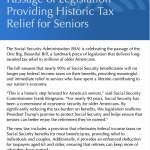The Trib has an article about food desert’s and the mayor’s plan to combat them. Here’s the link, but it’s behind a paywall (which I’m totally fine with but it’s inconvenient in this case).
But the gist of the story is that Mayor Emmanuel pledged two years ago to increase the number of grocery stores within “food deserts” and his efforts have fallen short — and, in addition, in order to make the situation look better, he’s used an alternate definition of food desert, availability of a grocery store within a mile, rather than half a mile.
Here’s the accompanying picture:

Maria Thompson waits with her children for a bus back to her home near 57th and Wood streets last week. She lives near a food desert. (Scott Strazzante, Chicago Tribune / August 19, 2013)
This is what bugs me:
first of all, she lives “near” a food desert — in other words, there’s shopping within a mile of her home, but she’s taking the bus because it’s more convenient or because she chooses to shop elsewhere. But does she really need to carry everything home in a stuffed box? Get this woman a utility cart! Without that, or maybe a radio flyer wagon if she’s walking, she’d be a pathetic sight no matter how close the grocery store was. Alternatively, what about a bike with a trailer? Of course, she’d need bikes for the kids, too, or maybe just the older one, with the younger one in the trailer next to the groceries, but she’s have a mode of transportation that would serve her well in multiple ways.
Fundamentally, the so-called “food desert” issue is one of transportation, not proximity of grocery stores. That’s why the food desert activists have so carefully defined the term: a food desert has both a mile (or half-mile) distance to a supermarket and a minimum percentage of people in poverty, plus, in rural areas, the distance is increased from one to ten miles, just to avoid the embarrassment of food desert maps showing disproportionately rural areas affected.
But it’s preposterous to imagine building supermarkets within easy walking distance of every city resident — isn’t it better to increase the mobility of residents, and their ability to easily transport groceries on a bus or a bike?












